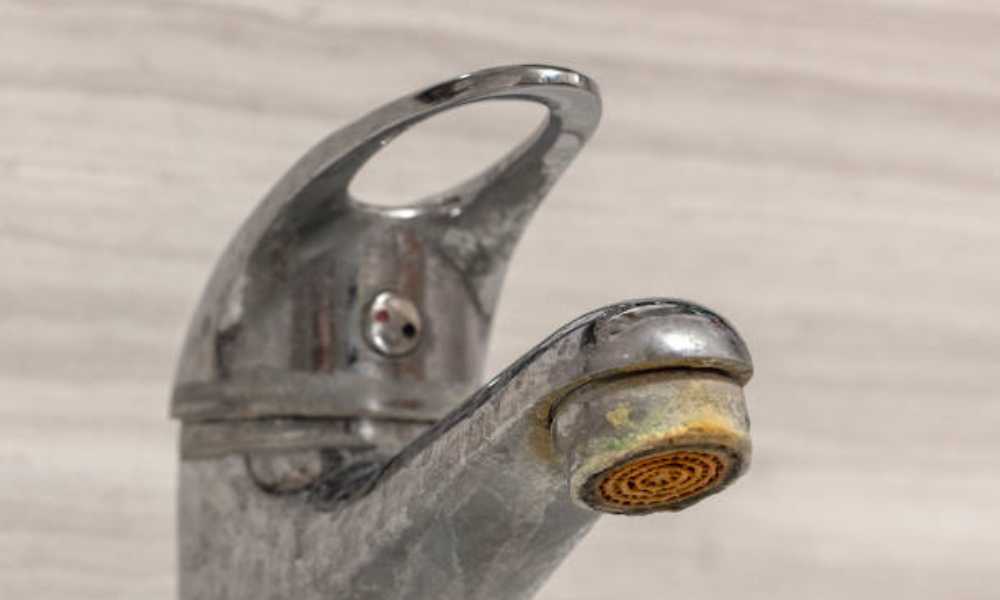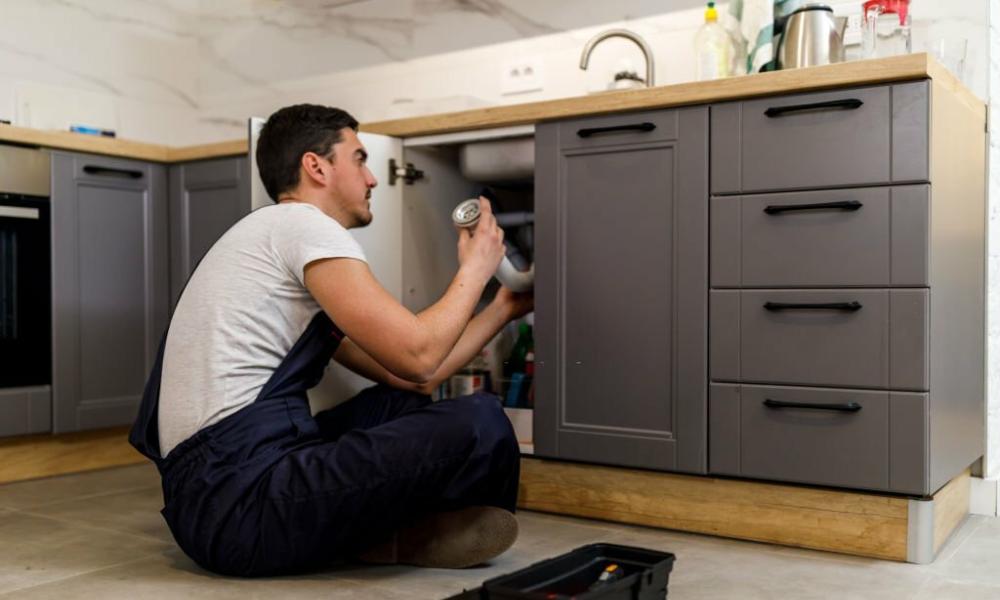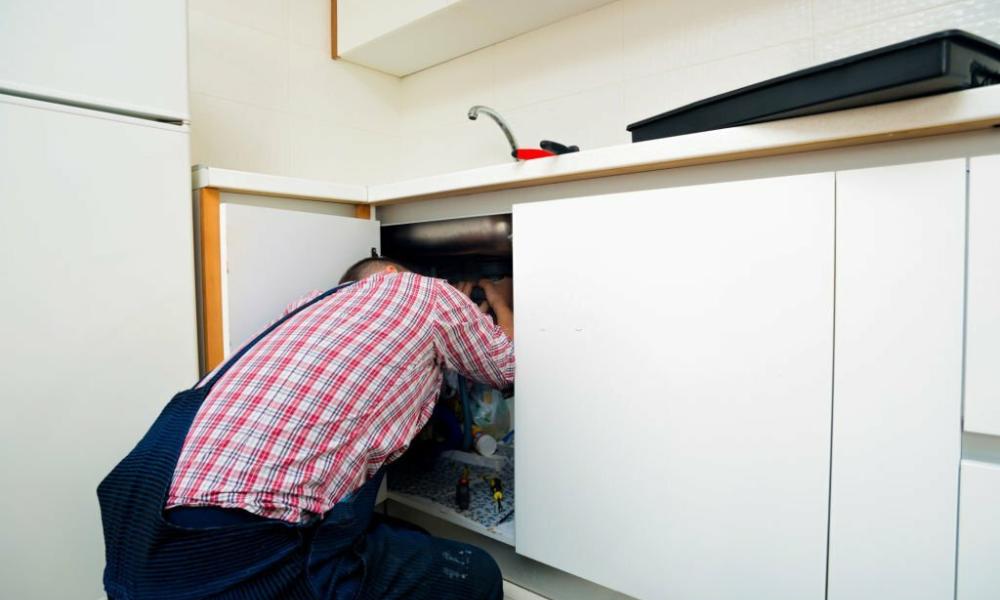Hard water can wreak havoc on your faucets, leaving behind a stubborn crust of calcium buildup that not only looks unsightly but also affects the performance of your fixtures. Imagine turning on the tap and instead of a steady stream, you’re met with a sputtering spray due to mineral deposits clogging up the spout. This common nuisance is not just an aesthetic concern; it can lead to reduced water flow, damaged hardware, and costly repairs down the line. However, fear not! In this article, we will delve into effective strategies and preventive measures to combat the pesky issue to Prevent Calcium Buildup On Faucets. By implementing these simple yet impactful tips, you can bid farewell to those crusty deposits and enjoy smooth-flowing without any hindrances.
What Causes Calcium Buildup On Faucets
Understanding the causes of calcium increase in faucets is crucial for preventing this common household issue. Excessive hard water and the reaction with minerals play integral roles in the formation of calcium deposits. By exploring the composition of hard water and how it interacts with minerals, you can take proactive measures to safeguard your faucets from unsightly buildup.
Hard Water Composition
Hard water is characterized by high levels of dissolved minerals, primarily calcium and magnesium. These minerals are present in the water supply as it percolates through limestone and chalk deposits. As a result, the water becomes laden with these minerals, leading to the distinct hardness that defines hard water.
Reaction With Minerals
When hard water comes into contact with surfaces, especially metal surfaces like faucets, the dissolved minerals can form deposits. Calcium carbonate, a common mineral in hard water, can accumulate on faucets over time, creating the chalky buildup known as limescale. This reaction is exacerbated by the evaporation of water, leaving behind mineral deposits that solidify on the metal surfaces.
Effects Of Calcium Buildup On Faucets
When it comes to maintaining your faucets, dealing with calcium buildup is a common issue that can be a real headache. Not only does it affect the appearance of your faucets, but it can also lead to more serious problems if left unchecked. Let’s delve into the effects of calcium increase on faucets and how it can be prevented.
Reduced Water Flow
One of the most noticeable effects of calcium buildup on faucets is reduced water flow. The mineral deposits can clog the openings of the faucet, causing the water to flow with less force. This can be frustrating when you’re trying to wash dishes or fill up a pot in a hurry. Regular cleaning and preventive measures can help maintain flow and prolong the life of your faucets.
Corrosion And Rusting
Another detrimental effect of calcium buildup is the potential for corrosion and rusting. When the mineral deposits accumulate on the faucet surfaces, they can create an environment conducive to corrosion. This not only affects the appearance of the faucet but can also lead to leaks and structural damage over time. Proper cleaning and maintenance are crucial in preventing this from happening.
Cleaning And Maintenance Tips
When it comes to maintaining the fixtures in your home, preventing calcium on faucets is a crucial part of the process. Without proper care and attention, mineral deposits can lead to poor water flow and even damage to your faucets. The cleaning and maintenance of your faucets play a vital role in keeping them in pristine condition for years to come. Here are some crucial cleaning and maintenance tips to help you prevent calcium on faucets.
Regular Cleaning Practices
Regular cleaning is essential to prevent calcium on faucets. It’s important to wipe down the faucets after each use to prevent water spots and mineral build-up. Use a soft cloth or sponge with mild soap and water to gently clean the surface of the faucet. Avoid harsh abrasives or chemicals, as they can damage the finish. Additionally, drying the faucet after each use can help prevent spots and mineral deposits from forming.
Natural Cleaning Solutions
One effective way to prevent calcium buildup on faucets is to use natural cleaning solutions. Vinegar and baking soda are powerful natural cleaners that can help dissolve mineral deposits. For stubborn buildup, soak a cloth in white vinegar and wrap it around the faucet, leaving it for a few hours to dissolve the deposits. Afterward, scrub the faucet with a soft brush or sponge to remove any remaining residue. These natural solutions are gentle on the fixtures and environmentally friendly.
Proper Maintenance Techniques
Aside from regular cleaning, proper maintenance techniques can help prevent calcium on faucets. Installing a water softener can minimize mineral deposits in the water, reducing the likelihood of buildup on your faucets. Additionally, regularly inspecting the faucets for any signs of leaks or damage and promptly addressing any issues can prevent mineral buildup in the long run. Replacing worn-out washers and seals can help maintain the proper functioning of the fixtures, reducing the likelihood of leaks and mineral accumulation.
Use Of Vinegar To Remove Calcium Buildup On Faucets
One common issue faced by many homeowners is the stubborn calcium on faucets. This buildup can not only be unsightly but can also impact the functionality of the faucet. Fortunately, using vinegar is an effective and eco-friendly solution to remove calcium on faucets.
Preparation And Application
To use vinegar for removing calcium buildup on faucets, you’ll need a few basic items and follow a simple process:
- White vinegar
- Empty plastic bag
- Rubber band or twist ties
- Clean cloth
Begin by soaking a clean cloth in white vinegar and then wrap it around the faucet, ensuring the affected areas are fully covered. Next, secure the cloth in place by using an empty plastic bag, and attaching it with a rubber band or twist ties. Allow the vinegar-soaked cloth to sit on the faucet for at least 30 minutes to an hour, and then remove the cloth and rinse the faucet with water. Finally, gently scrub the faucet with a clean cloth to remove the loosened calcium.
Benefits And Risks
Using vinegar to remove calcium buildup on faucets offers several benefits, including:
- Natural and safe: Vinegar is a natural and non-toxic solution, making it safe for both the environment and your health.
- Cost-effective: Vinegar is an inexpensive alternative to harsh chemical cleaners.
- Efficient: The acidic properties of vinegar effectively dissolve calcium deposits without damaging the faucet’s surface.
While vinegar is generally safe to use, it’s important to be cautious of the following risks:
- Odor: The strong smell of vinegar may be off-putting to some individuals.
- Surface compatibility: Some surfaces may be sensitive to acidic solutions, so always test a small area before applying vinegar to the entire faucet.
Installing A Water Softener System
Installing a water softener system can be an effective solution to prevent calcium buildup on faucets. Hard water with high mineral content can lead to limescale buildup on faucets, showerheads, and other fixtures, causing them to become clogged and less efficient over time. By installing a water softener system, you can reduce the mineral content in your water supply and minimize the risk of calcium in your plumbing fixtures.
How Water Softeners Work
Water softeners work by removing the minerals that cause hard water, such as calcium and magnesium ions. The most common type of water softener uses an ion exchange process to replace these minerals with sodium or potassium ions. The passes through a tank filled with resin beads that attract and bind to the calcium and magnesium ions, exchanging them for sodium or potassium ions. This results in softened that is less likely to cause scale buildup on faucets and fixtures.
Types Of Water Softeners
There are different types of water softeners available, including salt-based water softeners that use sodium to remove minerals, salt-free water softeners that use a physical process to neutralize minerals, and magnetic conditioners that alter the structure of minerals to prevent scaling. Each type of water softener has its advantages and considerations, so it’s important to choose the right one based on your water quality and preferences.
How To Extend Faucet Supply Line
To extend a faucet supply line, you will need to purchase a longer supply line that matches the size and type of the existing one. Measure the distance between the faucet connection and the water supply valve to determine the length needed. Turn off the water supply, disconnect the existing supply line, and attach the new longer one using proper fittings. Make sure to tighten all connections securely to prevent leaks.
Frequently Asked Questions
How Does Calcium Buildup Occur On Faucets?
Calcium buildup on faucets happens due to hard water, which is rich in minerals like calcium and magnesium. When water flows through the faucet, it evaporates, leaving these minerals behind. Over time, they accumulate, forming a crusty layer on your fixtures. This is more common in areas with high mineral content in their water supply, leading to unsightly white or chalky residue on faucets.
Why Is It Important To Prevent Calcium Buildup On Faucets?
Preventing calcium buildup is crucial for several reasons. Firstly, it maintains the aesthetic appeal of your faucets, keeping them shiny and free from crusty deposits. Secondly, it ensures the proper functioning of your faucets. Calcium can cause blockages, reduce water flow, and even damage the faucet mechanism over time. Lastly, it helps in extending the lifespan of your fixtures, saving you money and hassle from potential replacements or repairs.
How Can I Prevent Calcium Buildup On Faucets?
To prevent calcium buildup, you can adopt a few simple maintenance routines. Regularly cleaning your faucets with a mixture of vinegar and water can effectively remove and prevent mineral deposits. Using a water softener system can significantly reduce the hardness, thereby minimizing. Additionally, wiping your faucets dry after use can prevent from evaporating on the surface and leaving mineral residues. For a more proactive approach, consider installing water filtration systems that specifically target and reduce mineral content in your water supply.
Conclusion
Preventing calcium buildup on faucets is essential in maintaining the longevity and efficiency of your plumbing fixtures. By implementing regular cleaning routines and using descaling solutions, you can effectively combat the accumulation of mineral deposits. Additionally, investing in a water softener system can help reduce the hardness of your water supply, further preventing buildup. Remember to also inspect and repair any leaks or drips promptly to minimize the chances of mineral deposits forming. By taking proactive measures to prevent buildup on faucets, you can ensure the optimal performance and appearance of your fixtures for years to come.




